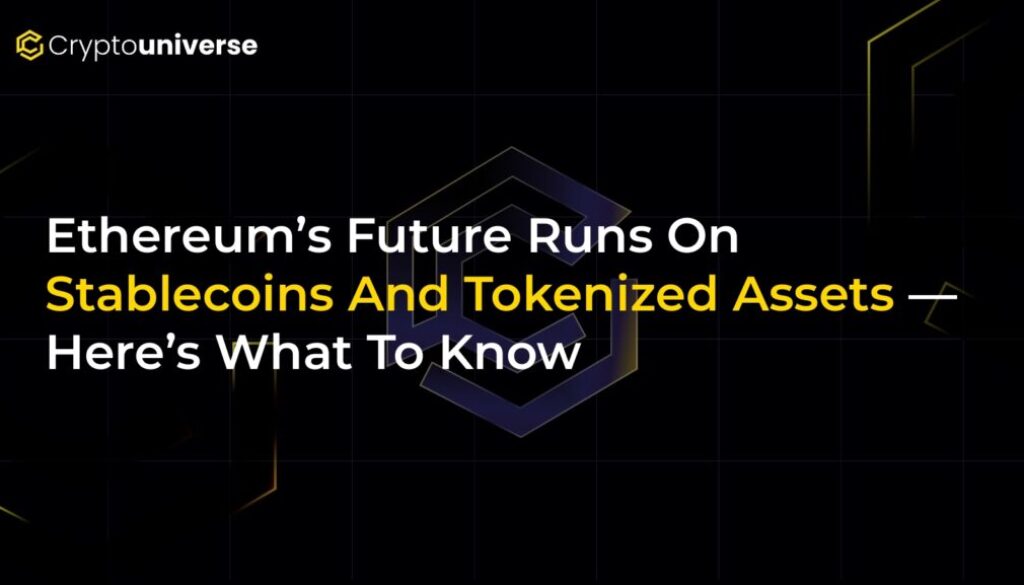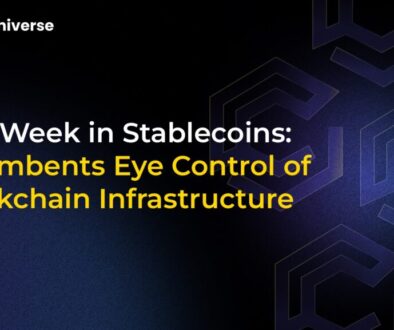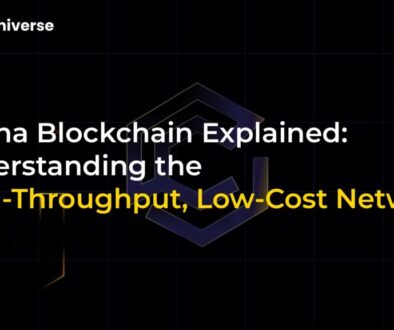Ethereum’s Future Runs On Stablecoins And Tokenized Assets — Here’s What To Know

Ethereum’s Future Runs On — Here’s What To Know
The conversation around Ethereum is undergoing a profound transformation. For years, the narrative was dominated by price speculation, ICOs, and the promise of a decentralized “world computer.” While that vision remains, a more tangible and powerful role is solidifying: Ethereum is becoming the global, compliant settlement layer for the future of finance.
This strategic evolution isn’t happening in a vacuum. It’s being driven by the explosive growth of two key pillars that are bridging the gap between traditional finance (TradFi) and the decentralized world: Stablecoins and Tokenized Real-World Assets (RWAs). Let’s dive into why these two forces are defining Ethereum’s next chapter.
The New Narrative: Ethereum as a Global Financial Ledger
Forget the complex jargon for a moment and think of Ethereum as a new kind of financial infrastructure. It’s a transparent, programmable, and globally accessible ledger where value can be moved and managed with unprecedented efficiency. This is a far cry from the old perception of crypto as just a volatile asset class. Instead, Ethereum is positioning itself as the foundational layer upon which a new, tokenized economy can be built.
This shift is attracting serious attention from both institutional players and everyday users, primarily because of the practical applications unlocked by stablecoins and RWAs.
Pillar 1: Stablecoins — Crypto’s “ChatGPT Moment”
For many, the biggest barrier to entering the crypto space has been its infamous volatility. Stablecoins solve this problem. These are digital currencies pegged to a stable asset, most commonly the U.S. dollar, providing a reliable medium of exchange and store of value on the blockchain.
As some experts have noted, stablecoins are having a “ChatGPT moment” for crypto. They are a breakthrough product that just clicks, making the utility of blockchain technology instantly understandable to the masses. Instead of explaining complex consensus mechanisms, you can now point to tangible benefits:
- Practical Utility: Stablecoins can be used for payments, remittances, and as a stable base within the often-volatile DeFi ecosystem.
- Accessible Yield: They have unlocked the ability for users to earn attractive yields, often between 5-10%, through on-chain lending and savings protocols—a compelling alternative to traditional savings accounts.
- Mainstream Credibility: The narrative has shifted so dramatically that government officials and major media outlets are now seriously discussing stablecoins, lending a new layer of legitimacy to the space.
Stablecoins have become the primary on-ramp for users to experience the power of DeFi, and the vast majority of this activity is happening on Ethereum.
Pillar 2: The RWA Revolution — Bringing Trillions On-Chain
If stablecoins are the currency of the new financial system, Tokenized Real-World Assets (RWAs) are the assets themselves. RWAs represent the process of taking tangible, off-chain assets and creating a digital token on the blockchain to represent ownership.
This includes a vast range of assets, such as:
- Real Estate
- Private Credit and Bonds
- Art and Collectibles
- Treasury Bills
Tokenizing these assets on Ethereum unlocks enormous benefits, effectively bridging the multi-trillion dollar world of TradFi with the innovation of DeFi. The advantages include enhanced liquidity for traditionally illiquid assets, fractional ownership, global accessibility, and transparent, 24/7 markets.
How Stablecoins and RWAs Drive Ethereum’s Value
This isn’t just a conceptual shift; it has a direct and powerful impact on Ethereum’s own market capitalization. The more value that is built and secured on the Ethereum network, the more valuable the network itself becomes.
A key insight from industry analysts is that the total market capitalization of tokenized assets (including stablecoins and RWAs) on Ethereum acts as a fundamental floor for ETH’s own market cap.
The logic is simple. As billions, and eventually trillions, of dollars in assets are tokenized on Ethereum, it creates a powerful economic flywheel:
1. Increased Network Demand: Every transaction, from sending a stablecoin to trading a tokenized asset, requires a fee paid in ETH (gas). This creates constant, utility-driven demand for the network’s native asset.
2. Enhanced Security: A higher ETH price increases the cost to attack the network, making it more secure. This security is essential to attract high-value assets from institutional players who demand a robust and tamper-proof environment.
3. Greater Economic Gravity: As more value is locked onto Ethereum, it becomes the de facto hub for tokenized finance, attracting even more developers, users, and assets in a self-reinforcing cycle.
The Engine Underneath: A Robust and Evolving Infrastructure
To serve as the settlement layer for a global economy, Ethereum’s underlying technology must be secure, efficient, and constantly improving. The network’s developers are continuously working to enhance its capabilities to handle this growing demand.
A prime example is the ongoing evolution of Go-Ethereum (GETH), one of Ethereum’s primary software clients. Recent updates have delivered substantial performance and efficiency improvements, making the network faster and more robust. Ethereum’s mainnet serves as the ultimate battle-tested environment, and its stability allows other ecosystems, like PulseChain, to integrate these proven software enhancements, further strengthening the broader blockchain landscape.
These technical advancements are crucial, as they ensure the network can reliably secure the immense value being built upon it.
The Future is Utility
The future of Ethereum is becoming clearer. It’s a future defined not by hype, but by utility. By serving as the foundational layer for stablecoins and the tokenization of real-world assets, Ethereum is building an indispensable bridge to the next generation of finance.
As this trend continues, the network is poised to become the primary settlement hub where the innovation of DeFi meets the scale of TradFi, creating a more open, efficient, and accessible financial system for everyone.


